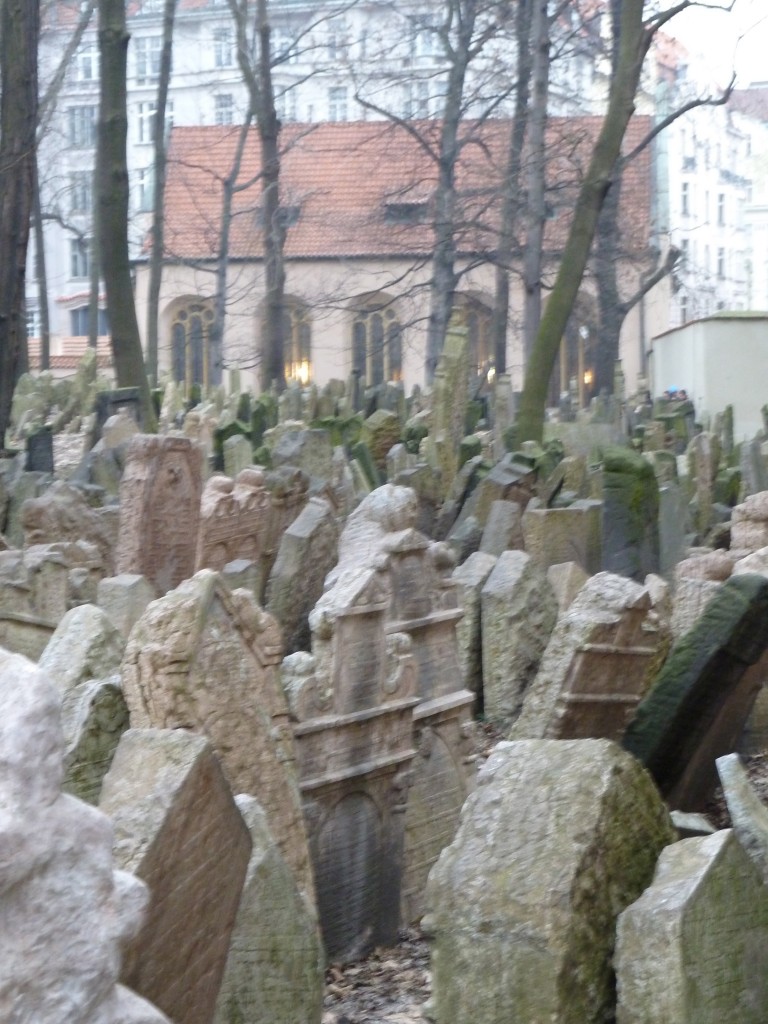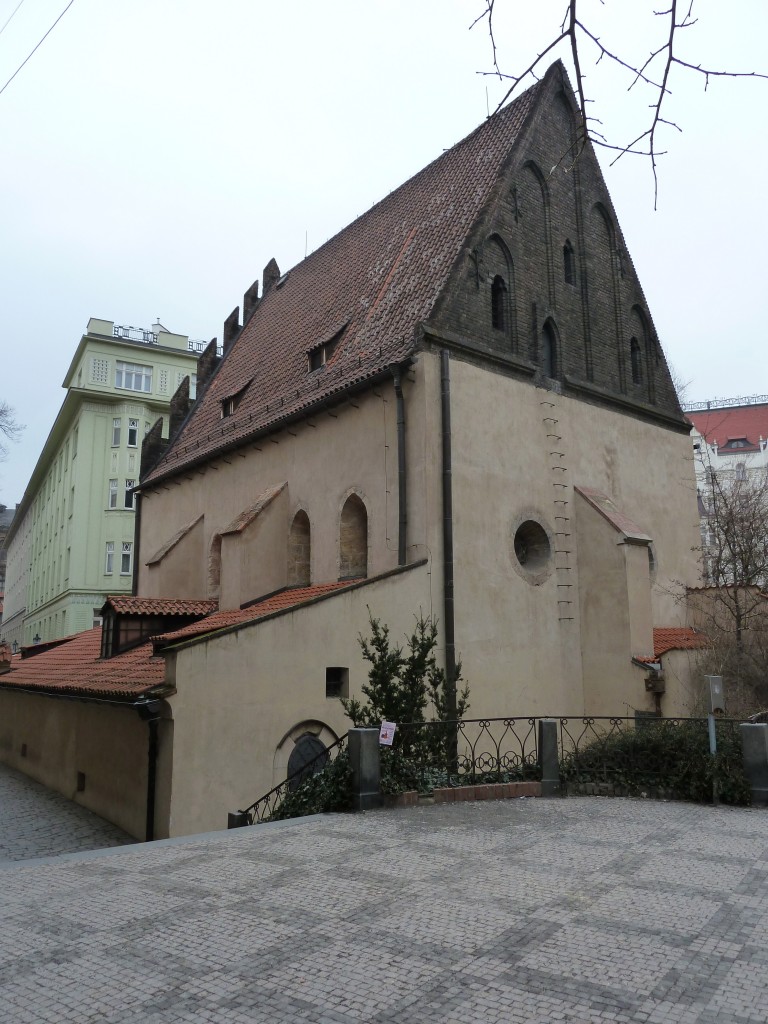Poignant in Prague

We visited the Jewish quarter of Prague this afternoon. There’s no question it’s worthwhile, but it’s an experience akin to rubbing yourself with sandpaper.
We started by walking around the Jewish cemetery – an incredibly crowded, higgledy-piggledy collection of gravestones. It is estimated there are 12,000 gravestones and about 100,000 graves. Jews cannot destroy graves or tombstones. So when restrictive laws led to them running out of space in the graveyard, they simply made it multi-storey. They added layers of soil, and moved the gravestones up a layer. It is now thought that there are up to 12 layers of burials under each set of stones.
The graveyard is emblematic of the experience of visiting the museums in the Quarter. It’s all about successive waves of pogroms and death. There’s little, if anything, that we saw celebrating life. And while it’s completely understandable, and important, that the waves of atrocities perpetrated on the Jewish people should be comprehended, it’s a painful experience.
The Synagogue beside the graveyard memorialises the local Jews who were killed by the Nazis during the Second World War. The lists of names with varying dates of birth but dates of death all reading 1942 or 1943 is moving. Far more moving though is the display of pictures drawn by kids in the ghetto and in the camps. The fact that hardly any of the kids survived the War is beyond sobering. And more poignant still are the innocent depictions of ‘normal’ life: of Jews being hanged, of camp fences, of cattle cars.

Probably the most famous grave in the cemetery is that of Rabbi Low. Low is particularly known for the legend that he created the Golem of Prague. The legend has it that when the Golem got out of control Rabbi Low deactivated it and stored it in the attic of the Old New Synagogue. We visited the Synagogue but sadly the attic is not open to the public; although there is a very suggestive ladder leading up the outside wall.
One version of the legend has it that the Golem would come back to protect the Jews of Prague in time of need. You can only think that the legend falls under its own weight; because it’s impossible to imagine a need greater than that experienced by those children and their families in 1941.
I was there last year, with a Jewish friend, and found it very moving. She is from the rabbincal Cohen branch and we found some Cohen graves (represented by a fish, I think). I wept in the room with the children’s pictures. All that hope, all that love of life, just gone.